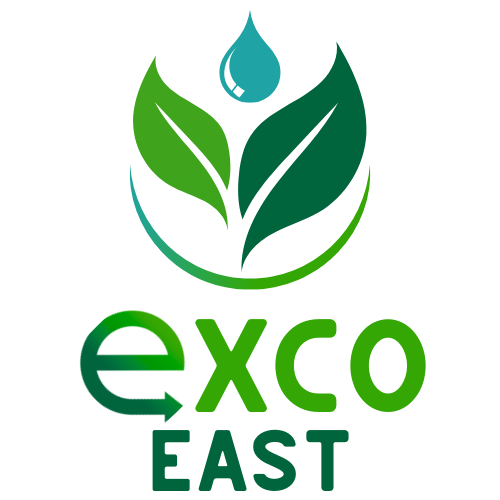Studies on the Use of Hypochlorous Acid (HOCl) in Medical Facilities (2025 Report)

Hypochlorous Acid in Medical Facilities
Hypochlorous acid (HOCl) has gained significant attention in healthcare settings for its potential as a safe, effective, and environmentally friendly disinfectant. It is a weak acid naturally produced by human immune cells and functions as a potent antimicrobial agent. In recent years, the use of Hypochlorous Acid in Medical Facilities, wound care, and infection prevention has increased due to its broad-spectrum antimicrobial properties and low toxicity compared to traditional chlorine-based products.
This report summarizes current research findings and regulatory guidance on the use of HOCl in medical environments, including environmental disinfection, whole-room decontamination, wound care applications, and safety considerations.
Effectiveness (general): CDC’s disinfection guideline recognizes chlorine compounds (including HOCl) as broad-spectrum disinfectants; low free-available chlorine levels rapidly inactivate many vegetative bacteria and some viruses when organic load is low, though higher concentrations are needed for tougher organisms.
Against *C. difficile* spores: Chlorine-releasing agents work better than detergents, but sporicidal performance depends on concentration and product; recent work using European EN-17126 found variable sporicidal efficacy among oxidizers (context: many hospitals still prefer higher-strength sodium hypochlorite for spores).
Regulatory status: Multiple HOCl products are EPA-registered for hard, non-porous healthcare surfaces (e.g., Aquavert/Briotech on List N; List Q includes HOCl for emerging viral pathogens). Always follow each label’s directions and application method.
Practical takeaway: HOCl can be an effective, low-residue option for routine surfaces. For spore concerns (e.g., *C. diff* outbreaks), guidelines generally point facilities to EPA-registered sodium hypochlorite products with sporicidal claims.
“No-touch” / whole-room application (fogging/atomizing)
Evidence: A 2021 study evaluated adding an HOCl whole-room atomizing system to manual terminal cleaning; it reported additional reductions in contamination, though study designs in this space vary and are still limited.
Guidance and safety: CDC generally does not recommend fogging/wide-area spraying as a primary method unless the product label specifically allows it; if used, ensure ventilation and observe exposure limits (chlorine gas limits are often used as the reference).
Operational note: Case studies show fogging can raise room humidity—relevant for procedural rooms and HVAC set points.
Wound & skin antisepsis (clinical care)
Randomized trials: RCTs of stabilized/HOCl-based solutions in chronic wounds report they’re safe and can reduce bioburden and support healing versus comparators; effects vary by formulation and protocol.
Ongoing/registered studies: Trials continue in surgical and burn settings, reflecting active clinical interest.
Overview/guidance: Recent WHO background (2025) and reviews summarize topical HOCl’s antimicrobial activity and clinical uses in wound care, with generally favorable safety at typical clinical concentrations.
Safety & exposure
Workplace exposure context: Odor/irritation thresholds for chlorine are low (~0.3 ppm); short-term exposure limits for chlorine are typically 0.4–1 ppm (region-dependent). Keep applications (especially fogging) within ventilation and label constraints.
Product safety data: HOCl solutions are usually low-residue and nonflammable; check each product SDS and label for PPE and engineering controls.
Bottom line for medical facilities
1. Routine surfaces: EPA-registered HOCl products are reasonable for daily disinfection of non-porous surfaces; verify organism claims and contact times on the label.
2. Spore risk areas: Use products with explicit sporicidal claims (commonly higher-strength sodium hypochlorite) per CDC recommendations.
3. Whole-room methods: Evidence exists but is still developing; follow labels strictly and note CDC’s caution about fogging as a primary method. Ensure ventilation and monitor humidity if you use it as an adjunct.
4. Patient care (wounds/skin): HOCl formulations have supportive RCT data for antimicrobial action and healing in chronic wounds and are generally well tolerated when used as directed.
Conclusion
Hypochlorous acid offers a promising, evidence-based option for infection control in medical facilities. Research supports its efficacy for environmental disinfection, wound care, and as a complementary method for whole-room decontamination. Its low toxicity and material compatibility make it particularly attractive for sensitive healthcare environments.
While HOCl demonstrates broad antimicrobial efficacy, healthcare providers should select EPA-registered products with appropriate organism claims and follow manufacturer instructions carefully. For environments with high spore contamination risk, traditional sodium hypochlorite products remain the gold standard. As clinical studies and regulatory guidance continue to evolve, hypochlorous acid stands out as a versatile, patient-safe disinfectant for modern healthcare settings.
Experience the next generation of cleanliness with Hypochlorous Acid (HOCl) — a safe, non-toxic, and highly effective disinfectant proven to eliminate harmful pathogens. Contact Exco East, LLC today to learn how HOCl technology can transform your facility’s infection control standards.
Exco East, LLC
3095 Bashor Rd
Conway, SC 29526
843-997-0239
https://excoeast.com/
